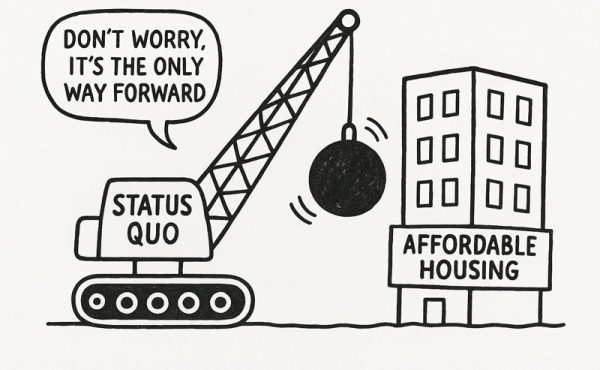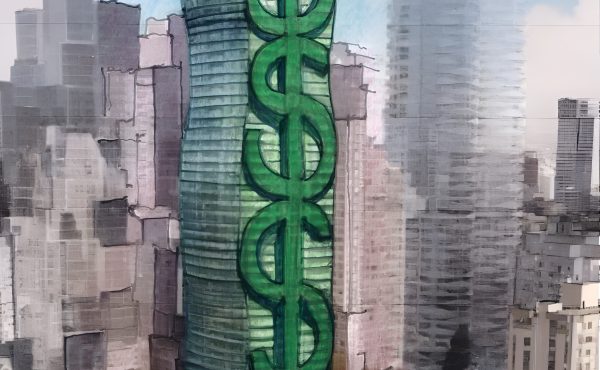
Edited by Stan Allen & Marc McQuade (Lars Müller Publishers 2011)
For centuries the discipline of architecture has drawn from the axioms of nature to both provoke and legitimize design. From form generation to structural precedents to ornament and organization, the phenomena and magnetism of the natural world has served dutifully as an inspiration to the many facets of architectural design.
This relationship between the natural landscape and architecture is thus not new or at all revolutionary, it was forged long ago, yet it persists today under the guise of new terminology and a new series of questions. The book Landform Building, edited by Stan Allen and Marc McQuade, pursues a contemporary questioning of the role of landscape and landform in emerging architectural practice.
These days however, this notion of ‘learning from nature’ seems to be an exhausted idea wrapped up into the fold of sustainability and “greeness” which we are confronted with ad nauseam. The addition of the words “landscape”, “green”, “natural” and “ecological” to anything architectural or otherwise, seems to wield an almost unfettered power charged with a universal assumption that these terms are good. To paraphrase Stan Allen “nobody is against landscape”. But while the overuse of these terms can at times diminish their meaning, they still describe a desire to evolve the relationship between human and organic invention.
The book is the product of a conference held by Princeton University’s School of Architecture, intent on addressing the notion of “landform building” as a nascent paradigm. It takes a critical position on what landscape means for the buildings and cities of today, beyond just an idea of landscape or landscape representation and beyond simply distilling the idiosyncrasies of nature into architecture. Although the latter is a part of it, “landform building” is described as the manifestation of landscape effects and an evolved cross-disciplinary exchange. As Stan Allen states: “Landform Building repositions conventional understandings of object and field – architecture and landscape – within the new domain of contemporary ecological theories.”
The book is a collection of essays, refreshingly candid conversations and interviews as well as precedents from many of today’s most provocative practitioners and academics; Reyner Banham, Weiss/Manfredi, Michael Maltzan, Bijarke Ingels, and Kenneth Frampton, just to name a few.
The impetus for Landform Building grew from the work of the 1990’s and from the development of landscape urbanism as a sub-field of the territory between architecture and various other disciplines. Techniques like folding, surface manipulation, built terrains, constructed ground and mega-structures laid the groundwork for what was to come.
As a kind of manifesto, Stan Allen itemizes the characteristics of Landform Building—some of which being a preoccupation with the programmatic possibilities of natural forms, the marking of territory or lack of territory between landscape and building, and the championing of emerging technologies and fabrication techniques to interrogate architecture. The subsequent text parcels the ideas and manifestations of landform building into four distinct themes: form, scale, atmosphere, and process.
One of the most compelling themes of the book is the idea of scale or vastness, whether vertical or horizontal. Certainly the allure of building large has been a point of fascination since we started organizing ourselves into settlements. From the great pyramids, Versailles, the Crystal Palace to the Empire State Building, human kind has no shortage of immense construction projects. But what makes this current paradigm in architecture so provocative is that we are still building to the same scale, but that the building masses are far more integrated into the landscape and the city. Projects like FOA’s Yokohama Terminal, Diller, Scofidio and Renfro’s High Line and Weiss/Manfredi’s Olympic Sculpture Park are all seminal works that mark a shift away from architecture as an object to something that taps into the ecologies, culture and processes of a given location.
Reyner Banham’s essay “The Vast and the Empty” draws on this fascination with vastness as he describes the American desert being a place within which man seeks respite while simultaneously remaining a harsh and unforgiving environment. The appeal of mountain ranges, prairie fields and desert lands is their shear immensity and resilience, operating like a vacuum and absorbing the chaos of the city. We seek these places because they are pure and because they subvert our feelings of urbanity. It certainly makes sense that we continue to reinvent architecture in the image of nature.
The book appropriately ends with an essay by David Gissen who states that reconstructing nature in whatever form is about a collective anxiety of the impact of urbanization: “The architectural reconstruction of topography and nature also represents forms of reconstruction and history. Through this lens, we understand “nature” as something that was (past tense) in the city. By bringing it back, we reconstruct the former reality of the city but also acknowledge the end of nature as we understand it.”
Certainly it is futile to try and reproduce nature in the city or to return the city to its pre-urban character, what’s done is done. It is however possible to restore and reconstruct the city as a hybrid of nature and landscape.
The book is intentionally inconclusive as the questions and investigations alluded to in the text are ongoing. If there is to be a particular architectural movement to mark our era, this is certainly it, and Landform Building is a thoughtful and exciting documentation of its progress.
***
Larraine Henning has Masters of Architecture from UBC and a Bachelors of Environmental Design from UofM. She has worked in both the Netherlands and Canada for a variety of architectural offices, and also works within the mediums of photography and web design.




